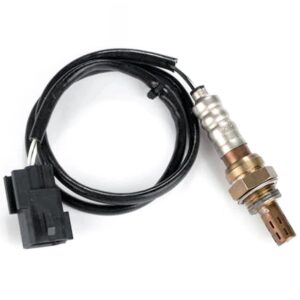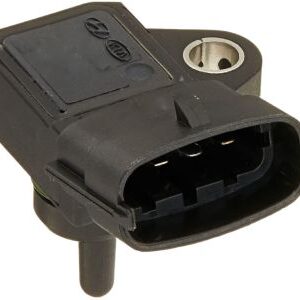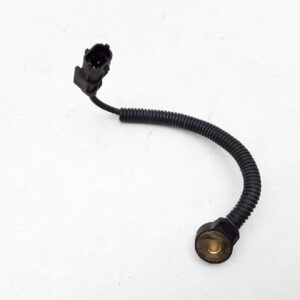Title: Mapping Performance: The Crucial Role of MAP Sensors in Modern Engines
Introduction:
As automotive technology continues to evolve, today’s vehicles are equipped with an array of sophisticated sensors designed to optimize engine performance and fuel efficiency. Among these essential components is the Manifold Absolute Pressure (MAP) sensor, a small yet powerful device that plays a pivotal role in monitoring engine load and regulating fuel delivery. In this blog, we’ll delve into the world of MAP sensors, exploring their function, importance, and the ways they contribute to maximizing engine performance and efficiency.
What is a MAP Sensor?
A MAP sensor is a specialized sensor typically located within the engine’s intake manifold or throttle body assembly. Its primary function is to measure the absolute pressure within the intake manifold, providing valuable data to the vehicle’s Engine Control Module (ECM) or Powertrain Control Module (PCM).
Functionality:
But how does a MAP sensor work its magic? As the engine operates, air enters the intake manifold, where it mixes with fuel before being distributed to the engine cylinders for combustion. The MAP sensor continuously monitors the pressure of the air-fuel mixture within the intake manifold, generating an electrical signal proportional to the absolute pressure. This signal is then transmitted to the ECM or PCM, where it is used to calculate engine load and adjust fuel delivery accordingly.
Importance:
The importance of MAP sensors in modern engines cannot be overstated. These small yet critical components play a crucial role in optimizing engine performance, fuel efficiency, and emissions control. By providing real-time data on engine load to the ECM or PCM, MAP sensors enable the engine management system to adjust fuel injection timing, ignition timing, and other parameters to ensure optimal combustion and power output.
Key Functions of MAP Sensors:
1. Engine Load Measurement: The primary function of MAP sensors is to measure the absolute pressure within the intake manifold, providing valuable data on engine load to the ECM or PCM.
2. Fuel Delivery Optimization: MAP sensors help the engine management system adjust fuel delivery based on engine load, optimizing fuel-air mixture for efficient combustion.
3. Turbocharger and Supercharger Control: MAP sensors play a crucial role in controlling the operation of turbochargers and superchargers, helping to optimize boost pressure and engine performance.
4. Emissions Control: By accurately measuring engine load, MAP sensors contribute to emissions control by ensuring precise fuel delivery and combustion, minimizing harmful emissions.
Maintenance and Replacement:
Proper maintenance of MAP sensors is essential to ensure accurate readings and reliable engine performance. Over time, MAP sensors may become contaminated with dirt, debris, or oil residue, leading to inaccurate readings or failure. Regular inspection, cleaning, and testing of MAP sensors as part of routine maintenance can help prevent issues and ensure proper function. If problems arise, such as poor engine performance or check engine light illumination, professional diagnosis and replacement of the MAP sensor may be necessary to restore proper operation.
Conclusion:
In conclusion, MAP sensors may be small components, but their impact on engine performance and efficiency is significant. By continuously monitoring engine load and providing real-time data to the engine management system, MAP sensors help optimize fuel delivery, combustion, and emissions control, ensuring smooth and efficient operation of modern engines. So, the next time you hit the road, take comfort in knowing that your engine’s MAP sensor is working behind the scenes to maximize performance and fuel efficiency.
In stock (can be backordered)
$18,926.31
Title: Mapping Performance: The Crucial Role of MAP Sensors in Modern Engines
Introduction:
As automotive technology continues to evolve, today’s vehicles are equipped with an array of sophisticated sensors designed to optimize engine performance and fuel efficiency. Among these essential components is the Manifold Absolute Pressure (MAP) sensor, a small yet powerful device that plays a pivotal role in monitoring engine load and regulating fuel delivery. In this blog, we’ll delve into the world of MAP sensors, exploring their function, importance, and the ways they contribute to maximizing engine performance and efficiency.
What is a MAP Sensor?
A MAP sensor is a specialized sensor typically located within the engine’s intake manifold or throttle body assembly. Its primary function is to measure the absolute pressure within the intake manifold, providing valuable data to the vehicle’s Engine Control Module (ECM) or Powertrain Control Module (PCM).
Functionality:
But how does a MAP sensor work its magic? As the engine operates, air enters the intake manifold, where it mixes with fuel before being distributed to the engine cylinders for combustion. The MAP sensor continuously monitors the pressure of the air-fuel mixture within the intake manifold, generating an electrical signal proportional to the absolute pressure. This signal is then transmitted to the ECM or PCM, where it is used to calculate engine load and adjust fuel delivery accordingly.
Importance:
The importance of MAP sensors in modern engines cannot be overstated. These small yet critical components play a crucial role in optimizing engine performance, fuel efficiency, and emissions control. By providing real-time data on engine load to the ECM or PCM, MAP sensors enable the engine management system to adjust fuel injection timing, ignition timing, and other parameters to ensure optimal combustion and power output.
Key Functions of MAP Sensors:
1. Engine Load Measurement: The primary function of MAP sensors is to measure the absolute pressure within the intake manifold, providing valuable data on engine load to the ECM or PCM.
2. Fuel Delivery Optimization: MAP sensors help the engine management system adjust fuel delivery based on engine load, optimizing fuel-air mixture for efficient combustion.
3. Turbocharger and Supercharger Control: MAP sensors play a crucial role in controlling the operation of turbochargers and superchargers, helping to optimize boost pressure and engine performance.
4. Emissions Control: By accurately measuring engine load, MAP sensors contribute to emissions control by ensuring precise fuel delivery and combustion, minimizing harmful emissions.
Maintenance and Replacement:
Proper maintenance of MAP sensors is essential to ensure accurate readings and reliable engine performance. Over time, MAP sensors may become contaminated with dirt, debris, or oil residue, leading to inaccurate readings or failure. Regular inspection, cleaning, and testing of MAP sensors as part of routine maintenance can help prevent issues and ensure proper function. If problems arise, such as poor engine performance or check engine light illumination, professional diagnosis and replacement of the MAP sensor may be necessary to restore proper operation.
Conclusion:
In conclusion, MAP sensors may be small components, but their impact on engine performance and efficiency is significant. By continuously monitoring engine load and providing real-time data to the engine management system, MAP sensors help optimize fuel delivery, combustion, and emissions control, ensuring smooth and efficient operation of modern engines. So, the next time you hit the road, take comfort in knowing that your engine’s MAP sensor is working behind the scenes to maximize performance and fuel efficiency.
| Warehouse | Inventory at warehouse 2 |
|---|




Get E-mail updates about our latest products and special offers.
Sensors and More is Jamaica’s ultimate online auto parts store. Established in 2020, we specialize in genuine electrical parts for Japanese, Read more…
Reviews
There are no reviews yet.